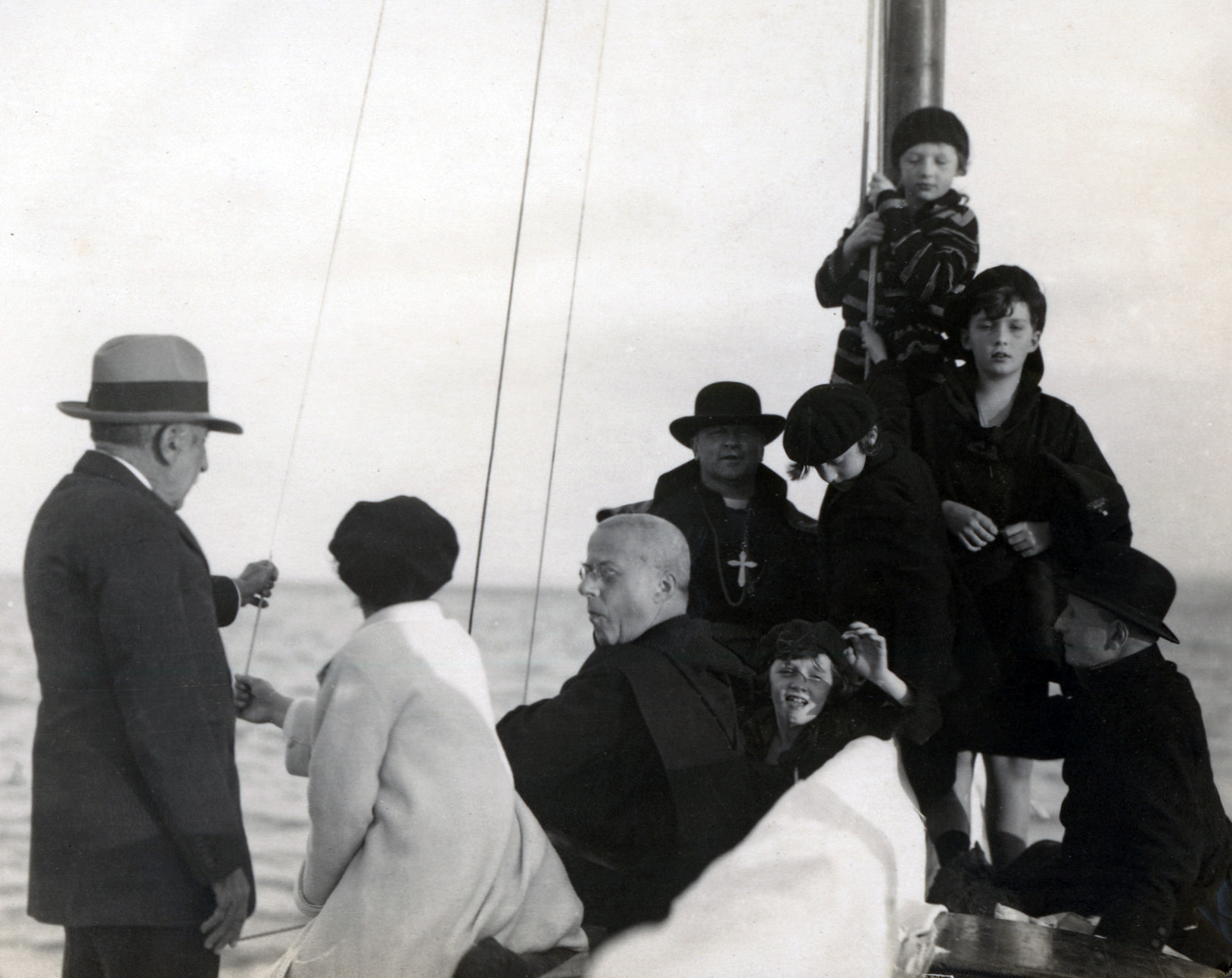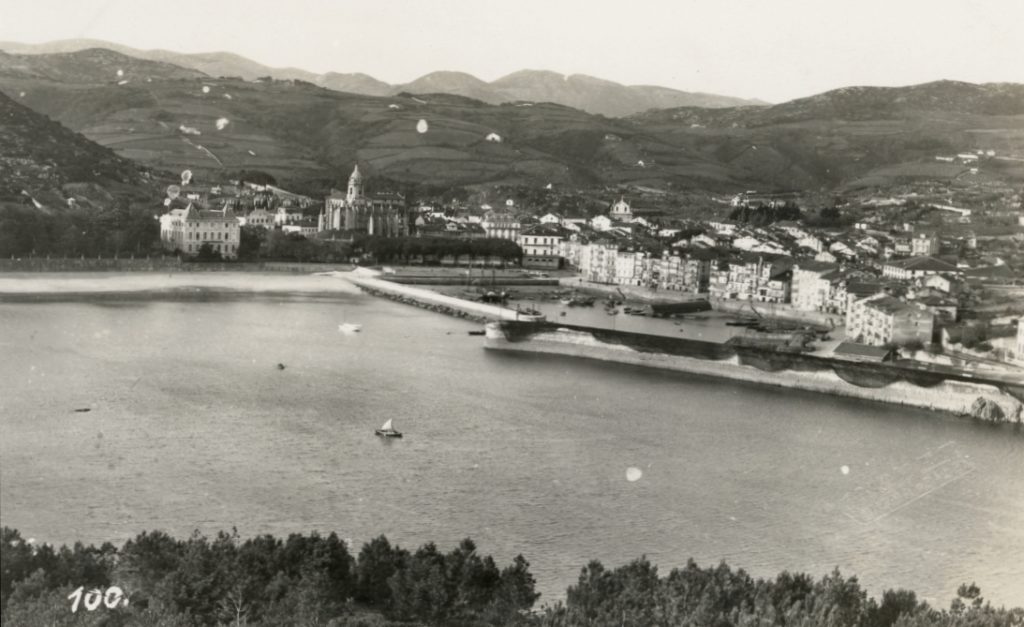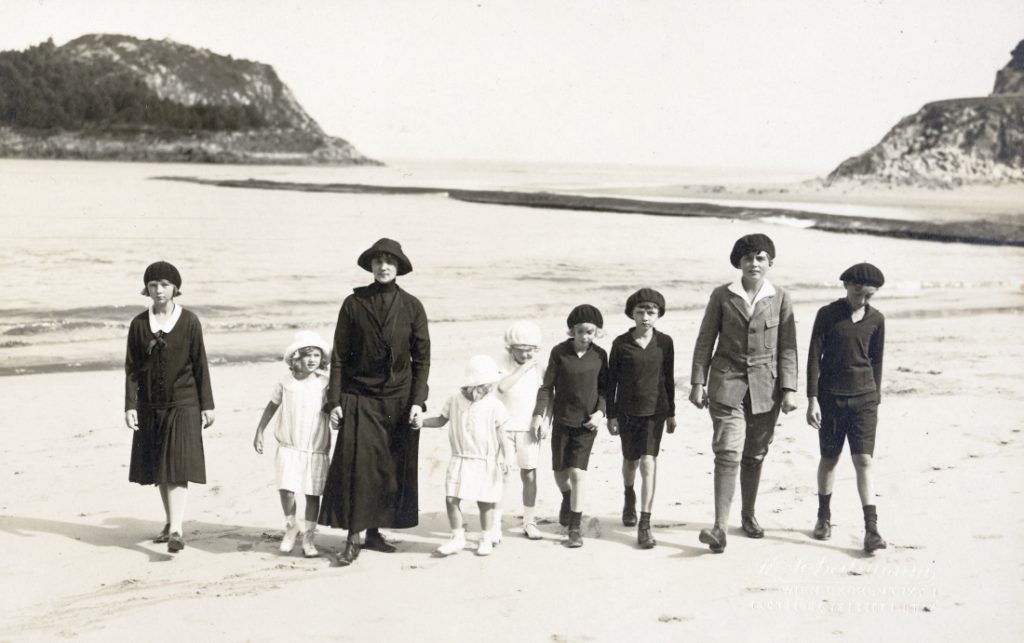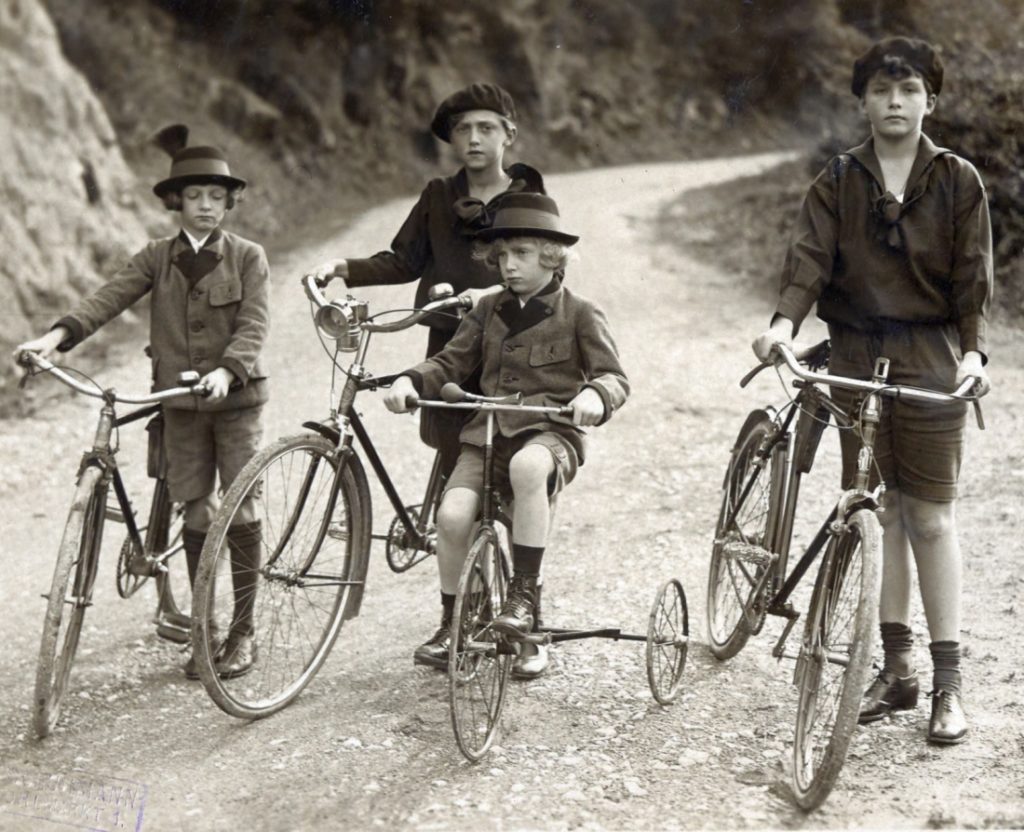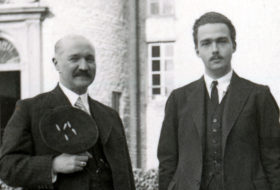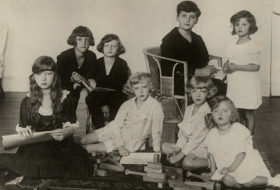Boat Excursion, Lekeitio, 1924
From the handwritten entries, it is possible to trace the daily life and the evolving personality of Otto von Habsburg even after the tragic death of his father. These journals were recorded in Spain – first in Madrid, and later in the Basque Country, in San Sebastián and Lekeitio. In 1923, Father Pál Zsámboki (1893–1952), former court chaplain and tutor, returned to Hungary; his responsibilities were assumed by Count Heinrich von Degenfeld-Schönburg (1890–1978), who is also the author of the diary excerpt presented in this article.
Otto and his siblings were, in every sense, “real” children. Yet a minor episode from 101 years ago during the summer holiday reveals that the young Crown Prince already understood the extraordinary expectations placed upon him due to his position. At just eleven years old, he not only approached his responsibilities with a sense of duty but also with a notable degree of creativity.
View of Lekeitio, with the Uribarren Palace visible on the left
Said diary excerpt recounts an episode from August 1924 – the visit of an Austrian pilgrimage group to the imperial family’s residence in Lekeitio, the Uribarren Palace. One of the main protagonists is, unsurprisingly, Otto von Habsburg. The other is Father Karl Maria Andlau, former Provincial of the Austrian–Hungarian Jesuit Province (1915–1919), and the third is a Jesuit priest from Innsbruck, Father Schmidt.
Father Andlau hailed from a noble Alsatian family. After graduating with honours, he pursued legal and then theological education. He entered the Society of Jesus in 1887 and was ordained a priest in Innsbruck in 1898. He served as prefect and professor at the Jesuit colleges in Mariaschein (present-day Bohosudov, Czech Republic) and Kalksburg (now a suburb of Vienna), becoming rector of the latter in 1904. He had known the future Emperor since Charles’s school years, and remained his confessor until Charles I acceded to the throne in 1916. Andlau also prepared both him and his fiancée, Zita, separately, for receiving the sacrament of matrimony. Their close relationship continued after the wedding on 21 October 1911.
The Jesuit priest was a talented and respected preacher; at the 1912 Eucharistic Congress in Vienna, where Archduke Charles travelled with his wife from his military post to the capital, he delivered a powerful sermon on the Eucharist and its relationship to the House of Habsburg. His commitment to the ruling family was unequivocal. After the death of Charles I on 1 April 1922, Father Andlau visited the widowed Empress and Queen and her children several times at their Basque Country residence, providing both friendly and spiritual support. His ties to the family and legitimist stance were widely known, but were not at all well received by the staunchly republican politicians of the newly established Austrian Republic. Consequently, these visits were conducted rather discreetly.
Queen and Empress Zita and her children in the Basque Country
Father Andlau arrived in the small fishing village on 4 August 1924. His status as a “family friend” and his striking personality are implied by a remark by Count Degenfeld on the day of his arrival: “His Majesty and Archduke Robert greeted him with great delight before lunch; His Majesty is especially looking forward to hearing ghost stories from him in the evenings.” The incident that took place during the Jesuit priest’s four-week summer stay – though the guest did not participate in it directly – casts light on how Otto, even at the age of twelve, recognised the risks of the fickleness between legitimist sympathisers and republican forces, and with what cunning he had extricated himself from an awkward situation.
“Friday, 8 August.
…Some light bicycling took place in the garden in the morning, after which the children prepared for the reception of the pilgrims. They were expected to arrive at half past eleven, but failed to appear at the appointed time, and so His Majesty and Archduke Robert waited for them in their room. His Majesty spent most of the time reading from “Büeler de Florin”, while Archduke Robert wrote and drew in a notebook he had requested. A few minutes before one o’clock, the pilgrims had finally arrived – approximately thirty ladies and gentlemen, led by the Reverend Canon of Wilten Abbey. Refreshments were first served to them in the staff dining room, while Their Majesties and the young Archdukes took lunch. Afterwards, Her Majesty the Empress received the leader of the group, along with a few ladies and gentlemen, in a private audience. During this time, the children remained in the large dining room. Then followed the formal reception of all the pilgrims in the glass-roofed antechamber. Their leader declared, in warm and heartfelt terms, their loyalty to the Empress, to His Majesty Otto, and to his siblings. In response, Her Majesty addressed and greeted each visitor individually. His Majesty, too, exchanged a few words with nearly every guest; on this occasion, he behaved impeccably, showing no sign of discomfort and engaging with them amiably and confidently. Among the first to be spoken to was Father Schmidt, the Jesuit from Innsbruck. As it was decidedly undesirable for news of Father Andlau’s presence in the household to reach the outside world, he refrained from appearing. Schmidt, however, seemed to suspect something – whether from this year or the previous – and conveyed Father Andlau’s greetings to Her Majesty the Empress, possibly in an effort to draw him out. He then informed Her Majesty that Father Andlau had travelled from Innsbruck to Maria-Schein for the summer. Immediately afterwards, he turned to His Majesty [Otto] and asked whether he knew where Father Andlau was. To this, His Majesty gave the remarkably clever reply:
“But surely, it was you yourself who just told Mama that he is in Maria-Schein.”
Two South Tyrolean priests wept openly, and others were visibly moved to tears when speaking with Their Majesties. At the end of the visit, they sang a verse of “Gott erhalte”, after which the Empress and the young Archdukes offered their heartfelt words of farewell. Father Hildebrand Rehm, a Benedictine from Göttweig – who was among the pilgrims with his mother – presented His Majesty with a beautifully written description of the Göttweig Abbey. Among the pilgrims were many clergy, representing nearly every region of the present-day German-Austria.”
Otto’s attitude toward the loyal subjects visiting Lekeitio and his sense of duty to his dynastic obligations are evident from the above passage. Count Degenfeld, however, does not let the reader forget that he was still, after all, an adolescent boy. On 7 August, he noted: “While playing, His Majesty injured his leg badly enough to limp – he requested an Agua de Golpes poultice in the evening so that he would not be hobbling the next day, when the Austrian pilgrims arrive.”
A similar episode had already been recorded earlier that year, on 23 May, during the visit of another pilgrimage group and their concluding benediction:
“During the blessing, His Majesty knelt the entire time, which must have caused him considerable pain due to a wounded knee. Later, he remarked to Countess Kerssenbrock: ‘Yes, it hurt – but I had to set a good example for my subjects.’ He said this in a most sincere and endearing tone – without the slightest trace of arrogance, thinking only of the duty that came with his position.”
It is also unmistakable how deeply emotional the encounter with the imperial family in exile proved to be for visitors from across the former Monarchy. For those who had made the journey from the daily realities of the new Austrian Republic to this small coastal town, yearning, as Stefan Zweig put it, for the “world of yesterday,” the familiar order of the Empire, a glimmer of hope still seemed to flicker that the Habsburgs might one day return to the imperial city. Empress and Queen Zita held audiences, occasionally accompanied by Otto, as if time itself had stood still.
Cycling excursion – (L–R): Felix, Robert, Karl Ludwig, and Otto
That diary entry for the day records another rare moment during the late afternoon cycling excursion: “From 5:30 to 6:45, we went on a bicycle ride – His Majesty, Archduke Robert, and I – along the road toward Marquina, as far as the bridge, well below the cave. On the way and during the break, His Majesty told me about the late Sovereign [Charles I] – specifically, about his final hours, which had seldom come up between us before. On such occasions, he always asks that Archduke Robert walk a little farther ahead.”
The trauma of his father’s death just over two years earlier, and the tension between childish playfulness and the strict discipline imposed by Zita – all experienced under the relatively comfortable conditions of exile – seem to find some resolution in the presence of the beloved tutor, Count Degenfeld. The visit of the pilgrims may well have contributed to this as well. In any case, by August 1924, the not-yet-twelve-year-old Otto was already displaying a sensibility that would be echoed nearly fifty years later, in a note he wrote about his father in 1972: he sought to do “his utmost” having come to understand the complex connection between the “world of yesterday,” the political realities of the 1920s, and his personal destiny. This ability would serve him well throughout the long course of his life.
Eszter Fábry, Prőhle Gergely
Source:
Quelle